THE DELIGHT OF A CLINTON HILL BOY (1945)
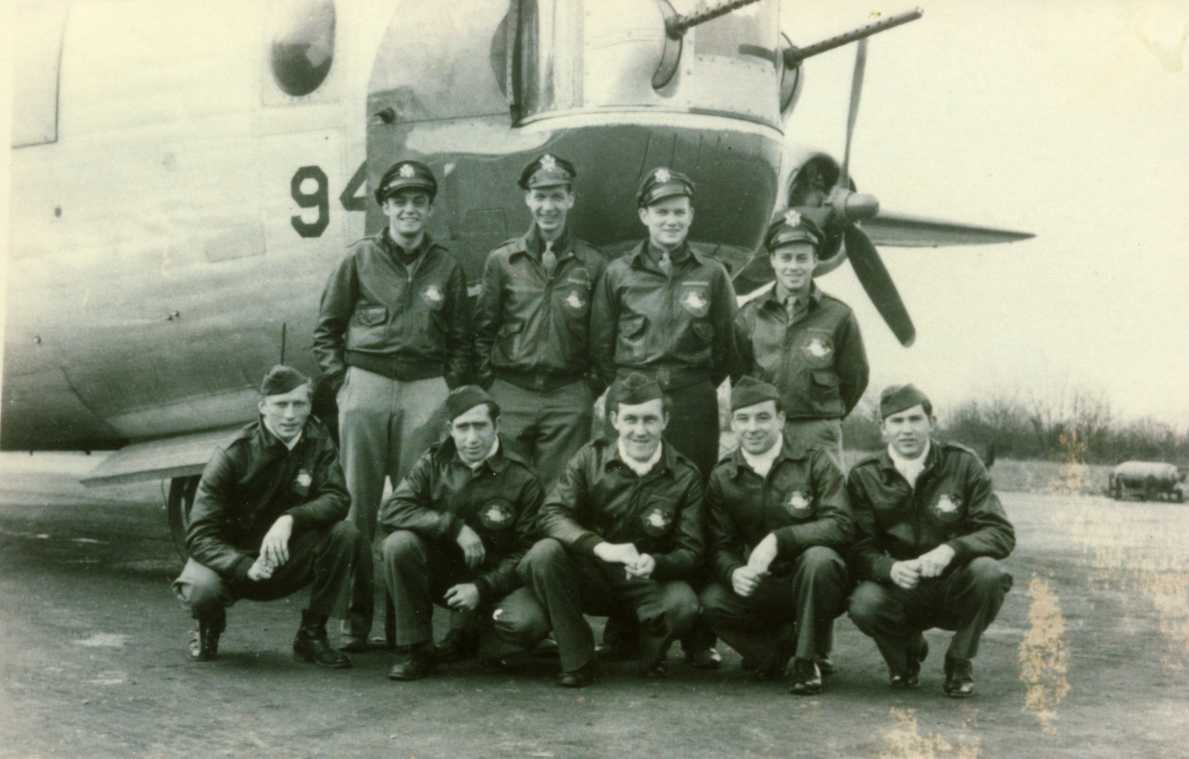
Brownstone Detectives investigates the history of our clients’ homes.
The story you are about to read was composed from research conducted in the course of one of those investigations.
Do you know the history of YOUR house?
********************************************************************************************************************************
(The following is an excerpt from the Brownstone Detectives House History Book, No. 241 Washington Avenue – The Story of a House.)

On a cloudy windy December evening, the crew of the B-24 Liberator “Beaver’s Baby,” flying at an altitude of 23,000 feet, neared the Belgian border. On the return leg of a bombing mission over Hanau, Germany, the plane’s pilot, Captain Clarence “Bart” Barton, had a crucial decision to make. Their heavy bomber had lost an engine and, according to the Barton, “another was almost gone.”
It was clear, he decided, that they would be unnecessarily risking their plane and crew if they attempted a channel crossing considering their plane’s condition. Barton thus alerted his men that they were going to have to make a forced landing somewhere. He, thus, directed his navigator, 18-year-old Lieutenant Robert F. Palestri, to identify the coordinates of the nearest friendly airfield and to guide them to that location.
Nearing Belgian soil, after hours of flying over Germany, the crew’s navigator oriented the pilot toward what appeared to be a dark Belgian runway many thousands of feet below them.
With the coordinates to guide them, the pilot began inching his aircraft downward. As they dropped altitude and their bomber began to approach the general location of the runway, the crew began to notice something that did not seem quite right. Flashes of light, intermittently at first and then in a constant pattern, began lighting up beside the runway.
It was at this point that Palestri immediately realized his navigational error. They had not yet reached Belgium, but were actually attempting to land on a German Luftwaffe airfield.
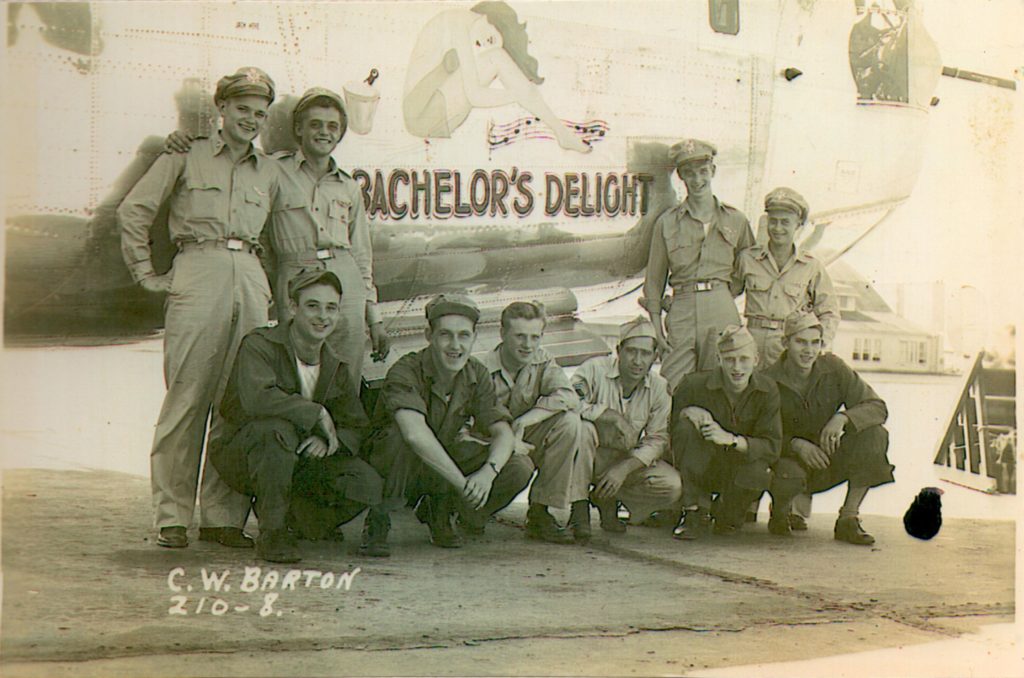
Almost instantaneously, Barton pulled up, gaining altitude and trying to place as much distance between their plane and the German anti-aircraft guns on the airfield. Still disoriented, but needing to land somewhere, a member of the crew noticed another navigational guide which seemed to appear out of nowhere – an American P-47 Thunderbolt fighter plane thousands of feet above them.
The P-47’s pilot had figured out that they were in trouble and “circled a hole in the clouds so we would know where to go,” according to co-pilot Captain Wally Bludworth. The fighter pilot eventually guided them to a nearby Belgian airfield where they were able to make a safe landing. There, they left “Beaver’s Baby” for repairs and returned to England.
THE DEBRIEF
Back in friendly territory the crew, in its debriefing, discussed what had taken place on their mission. Cloud cover had been thick, according to Bludworth, but still, Palestri claimed the error as his own.
“It was my fault,” he said in a 1991 interview, noting that the wind had picked up and shifted directions, making it difficult to locate Allied territory.
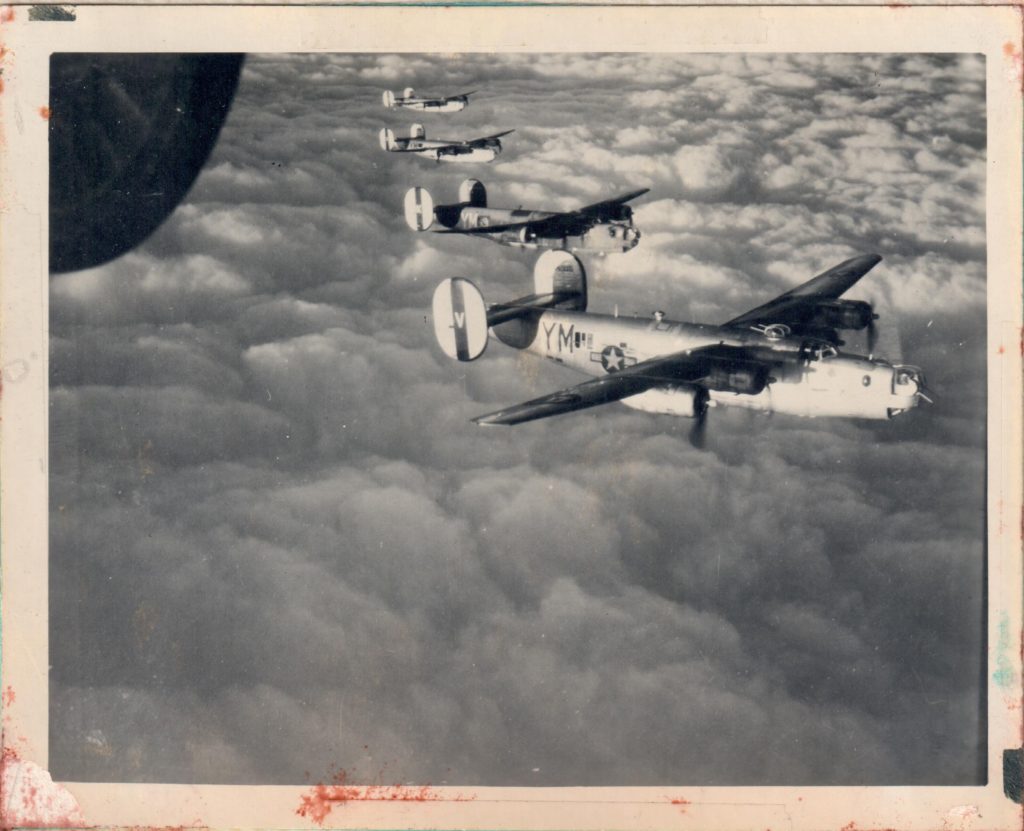
Still, Palestri and the rest of the crew were fortunate, they felt, and amazed at the tactic taken by the German soldiers who fired their antiaircraft guns at them as they were attempting to land.
“They were very foolish,” Palestri continued, recalling the incident, and in particular, how the Germans automatically began firing at them. “They could have had us had they not revealed their position.”
The incident, which earned Palestri the nickname “the great navigator,” would turn out to be the closest the crew would come to losing their lives or becoming prisoners of war.
It was after this near-fatal mission that the crew, which had started off the war with a brand new B-24 Liberator they had nicknamed “Bachelor’s Delight,” got their old plane back for the rest of the war.
THE OL’ SWITCHEROO
“They assigned us the most war weary B-24 in the group,” Barton said, recalling the plane switch they were subjected to when they arrived in England and were assigned to the 93rd Bomb Group. It was the price that came with being the newest and freshest B-24 crew in the theater. When the “Bachelor’s Delight” was returned to them, though, they could not have been happier.
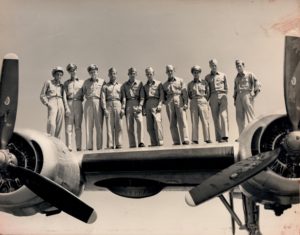
While their close call with the German antiaircraft gunners was not at all uncommon for heavy bombers in WWII, taking “battle damage” to their Liberator was par for the course. On 75% of their missions they had taken some sort of non-fatal enemy anti-aircraft and small arms fire.
A more common form of close call for the gas-guzzling “heavies” that the squadron flew, though, involved running out of fuel.
“One time we ran out of gas on one engine while on final approach,” recalled Barton. “Our flight engineer had been juggling tanks trying to keep fuel going to all four engines.”
The scariest mission, though, according to Palestri, was their first, a bombing run over Kassel, Germany.
“You looked down and you could see nothing but black puff,” he said. “We went through it. After that, we didn’t bother to look down.”
The crew, which completed their wartime service after seven months of delivering their payloads onto German targets, ended up with a total of 35 successful bombing missions. Each assignment had lasted between seven and nine hours and had fallen within a 3,000-mile radius of enemy territory. Their list of bombing targets reads today like a lesson in German geography, spanning from Berlin in the North to Augsburg in the south.
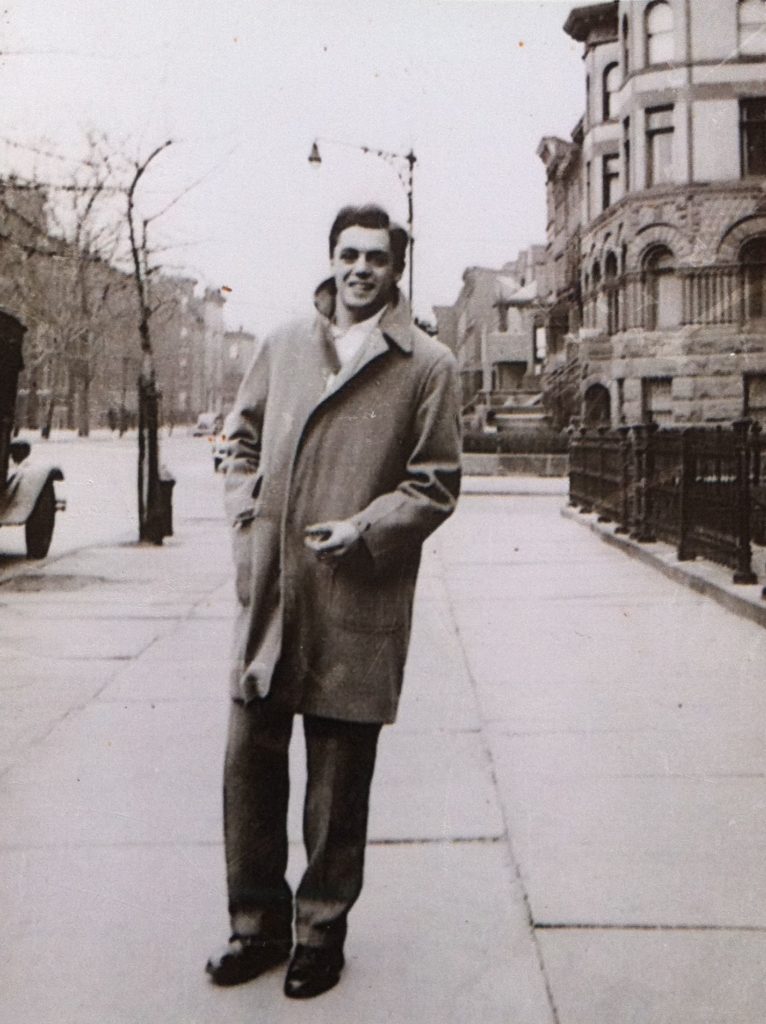
Not all missions, however, comprised of dropping bombs on enemy targets. Other operations, while just as dangerous, involved providing logistical support to Allied ground operations in what were known as “trucking” missions. After the D-Day invasion in June of that year, the “Bachelor’s Delight,” along with many other Liberators, was put to work resupplying ground forces by flying into former Luftwaffe airfields that had just been captured. Some of their most important trucking missions were flown in support of General George Patton’s Third Army during its breakout from Avranches and the subsequent dash across France.
GETTING THEIR WINGS
The crew’s genesis was in Lincoln, Nebraska, where its members first formed a crew. Afterwards, they were sent to Biggs Field, Texas, in May of 1944, for their initial training on the B-24 Liberator. By August of that year they were assigned their very own Liberator, naming her at that time “Bachelor’s Delight.”
Proud of their new bomber, the crew members had each paid $10 to have the side of their Liberator artistically designed with their trademark. A local painter decorated the hull of their aircraft with the name “Bachelor’s Delight. Above this he added a graphic of a sultry young woman, an iced bottle of wine at her side, along with the musical notation of a melody. Next to this illustration was added the crew’s slogan: “Wine, women and song.”
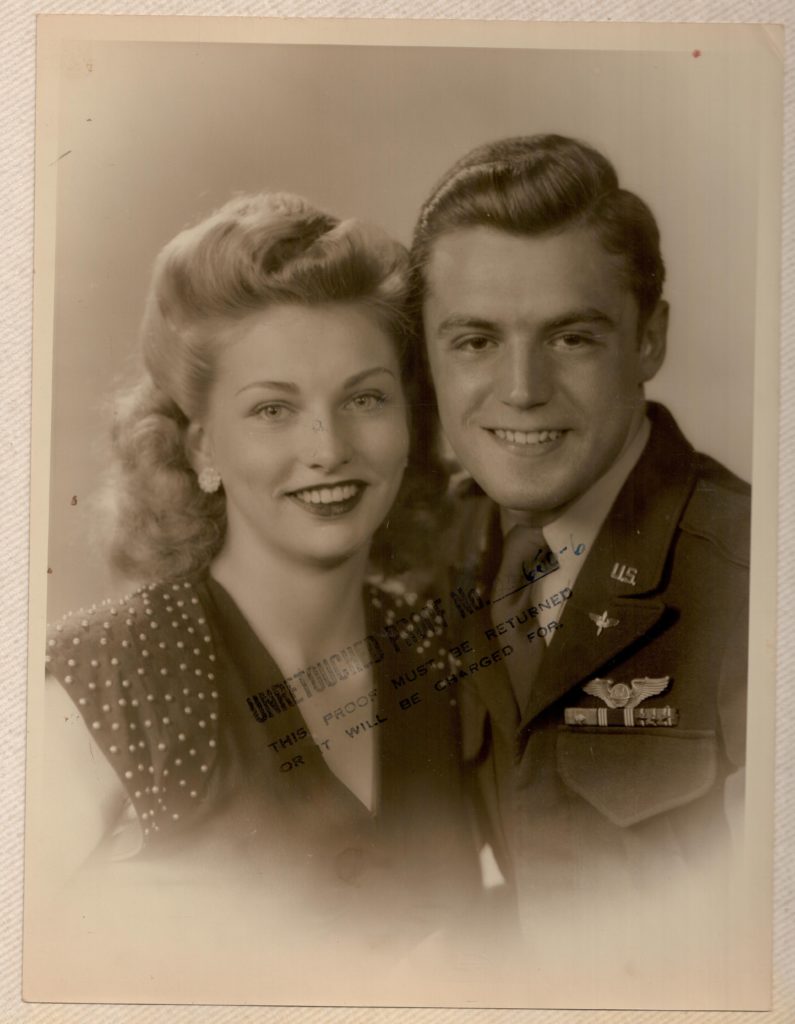
Arriving in the European Theater at the end of August they were assigned to the 93rd Bomb Group, a part of the 8th Air Force located at Hardwick Air Force Base in England. There they would await their first mission which would come just a few weeks later on 22 September.
Throughout the war, the 93rd concentrated on the bombardment of strategic targets such as marshalling yards, aircraft factories, oil refineries, chemical plants, and cities throughout Germany.
THE BABYFACE NAVIGATOR
Palestri, at 18, the youngest member of the flight crew, had, in spite of his age, been promoted to lieutenant right out of Navigation School. His command at the training unit had quickly realized his aptitude for numbers and planning, making him an officer, a higher rank than most of the crew.
He would, through 35 missions, prove his worth to his fellow airmen and officers, bringing them across many thousands of miles over hostile territory, always guiding them back home again. He would earn the respect of his men through his dedication and hard work, as well as through the example that he had set for them on each of their almost three dozen missions together.
By the time the Bachelor’s Delight had completed its last mission in March of 1945, the air war was practically over. The crew returned to the United States in June where they were awarded the Air Medal with 5 Oak leaf Clusters and the European Theater of Operations Medal, and “the great navigator,” Lt. Robert Palestri, married his sweetheart, Claire Carberry.
———————————————————————————————————————–
 Brownstone Detectives is an historic property research agency. Our mission is to document and save the histories of our clients’ homes. From our research, we produce our celebrated House History Books and House History Reports. Contact us today to begin discovering the history of your home.
Brownstone Detectives is an historic property research agency. Our mission is to document and save the histories of our clients’ homes. From our research, we produce our celebrated House History Books and House History Reports. Contact us today to begin discovering the history of your home.